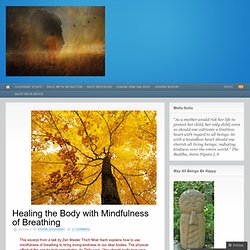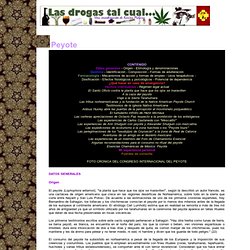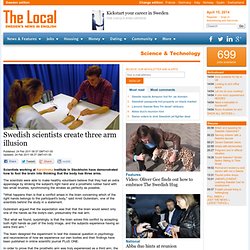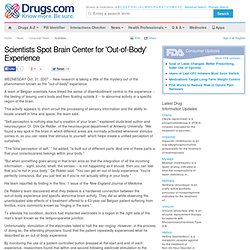

7 Terrible Abuses Suffered By Women Around The World. Crime NOTE: Some readers may find the text and images on this list disturbing.

For most of our readers, the biggest troubles in their lives are petrol prices, long working hours, and increasing food costs. New tools make self-publishing e-books easier. Scott Nicholson, a prolific author with 70 books to date, has found most of his success online, selling self-published books at Amazon for the Kindle and other e-readers.

He handles the entire process himself — from downloading stock photos at $4 to $5 a pop and making covers in Gimp, a free photo software tool, to converting the manuscripts into formats compatible for the e-readers. "If I can do it, anyone can," says Nicholson, 49, who writes four novels a year from his home in Boone, N.C. He won't say how much he makes, but it's a "comfortable living," solely on e-book royalties. Healing the Body with Mindfulness of Breathing « Metta Refuge.
This excerpt from a talk by Zen Master Thich Nhat Hanh explains how to use mindfulness of breathing to bring loving-kindness to our dear bodies.

The physical effect of this can be truly remarkable. As Thây says, “You should really love your body. You should really take care of your body. Mindful breathing, with rest, can do miracles. Shroomery - Magic Mushrooms (Shrooms) Demystified. Peyote y San Pedro - Plantas y alcaloides visionarios. Origen El peyote (Lophophora wiliamsii), "la planta que hace que los ojos se maravillen", según la describió un autor francés, es una cactácea de origen americano que crece en las regiones desérticas de Norteamérica, sobre todo en la sierra que corre entre Nayarit y San Luis Potosí.

De acuerdo a las estimaciones de uno de los primeros cronistas españoles, fray Bernardino de Sahagún, los toltecas y los chichimecas conocían el peyote por lo menos dos milenios antes de la llegada de los europeos al continente americano. El etnólogo Carl Lumholtz estima que en realidad se remonta a más de tres mil años de antigüedad ya que un símbolo utilizado por los tarahumaras en la ceremonia del peyote aparece en tallas rituales que datan de esa fecha preservadas en rocas volcánicas.
El consumo del peyote ha subsistido en norteamérica a pesar de la llegada de los Europeos y la imposición de sus creencias y costumbres. Тибетская книга мертвых " The neural basis of the Ayahuasca hallucinations. Lucid Dreams. Experience archive.
Solitary Confinement: The Invisible Torture. The expanding torture scandal has left the American public horror-struck at how casually the Bush administration and its employees countenanced torture techniques like sleep deprivation, waterboarding and stress positions.

However, another form of torture was not just used on detainees, but is being used on at least 25,000 Americans right now. That’s the number of people currently held in long-term solitary confinement in the United States, living for years in 80-square-foot concrete cubes lit by round-the-clock fluorescent light, with little or no human contact. The U.S. is alone among developed countries in using long-term solitary confinement on a regular basis. Academic scientific analysis of solitary confinement is still in its early stages, but the results are obvious, and echo the experiences of Americans who’ve been held in solitary confinement by terrorists or as prisoners of war.
Human beings evolved to be social creatures. The CIA's favorite form of torture - Torture. Sensory deprivation. Short-term sessions of sensory deprivation are described as relaxing and conducive to meditation; however, extended or forced sensory deprivation can result in extreme anxiety, hallucinations,[2] bizarre thoughts, and depression.[3] A related phenomenon is perceptual deprivation, also called the ganzfeld effect.

In this case a constant uniform stimulus is used instead of attempting to remove the stimuli, this leads to effects which has similarities to sensory deprivation.[4]
Scientists Induce Out-of-Body Sensation. Out-of-Body Experiences: All in the Brain? Body swap study shows 'self' is a trick of the mind. Swedish scientists create three arm illusion. Published: 24 Feb 2011 08:37 GMT+01:00Updated: 24 Feb 2011 08:37 GMT+01:00 Scientists working at Karolinska Institute in Stockholm have demonstrated how to fool the brain into thinking that the body has three arms.

The scientists were able to make healthy volunteers believe that they had an extra appendage by stroking the subject's right hand and a prosthetic rubber hand with two small brushes, synchronizing the strokes as perfectly as possible. "What happens then is that a conflict arises in the brain concerning which of the right hands belongs to the participant's body," said Arvid Guterstam, one of the scientists behind the study in a statement.
Guterstam argued that the expectation was that that the brain would select only one of the hands as the body's own, presumably the real arm. "But what we found, surprisingly, is that the brain solves this conflict by accepting both right hands as part of the body image, and the subjects experience having an extra third arm. " Researchers use virtual-reality avatars to create 'out-of-body' experience. In the film Avatar, human minds are transferred into synthetic bodies.

Photograph: Sportsphoto Ltd. /Allstar In the film Avatar, explorers on the planet Pandora transmit their minds into alternative bodies. Scientists Spot Brain Center for 'Out-of-Body' Experience. WEDNESDAY Oct. 31, 2007 -- New research is taking a little of the mystery out of the phenomenon known as the "out-of-body" experience.

A team of Belgian scientists have linked the sense of disembodiment central to the experience -- the feeling of leaving one's body and then floating outside it -- to abnormal activity in a specific region of the brain. This activity appears to short-circuit the processing of sensory information and the ability to locate oneself in time and space, the team said. "Self-perception is nothing else but a creation of your brain," explained study lead author and neurosurgeon Dr. Dirk De Ridder, of the neurosurgical department at Antwerp University. "We found a key spot in the brain in which different areas are normally activated whenever stimulus comes in, so you can relate that stimulus to yourself, which helps create a unified perception of ourselves. " "The 'total perception of self,' " he added, "is built out of different parts.
Need a hand? Scientists convince people they have 3 arms. Cari Nierenberg writes: If two hands are better than one, then imagine what you could do with three.

In a new study, Swedish researchers were able to trick participants' brains into believing their body had an extra arm. Brain scientists at the Karolinska Institutet in Stockholm conducted five different experiments on 154 healthy men and women, in the paper published in the February issue of the online journal PLoS ONE. To create the impression of having a third arm, participants sat with their right arm resting on a table and their left arm hidden from view, behind a screen. Swedish scientists help people 'feel like Barbie' Published: 27 May 2011 12:20 GMT+02:00Updated: 27 May 2011 12:20 GMT+02:00 Scientists working at Stockholm's Karolinska Institutet in Stockholm have shown its possible to fool people into thiking they're a Barbie-doll or a 4-metre-tall giant. “Both illusions were cool, but if I have to choose which one I preferred, I would have to say the Barbie,” Björn van der Hoort, neurologist at Karolinska Institutet, told The Local.
Crossing your arms 'relieves hand pain' 20 May 2011Last updated at 01:36 Crossing your hand in front of you 'could reduce pain' Crossing your arms across your body after injury to the hand could relieve pain, researchers suggest.